Today I wanted to share with you the Christmas cake that I’ve made this year. It’s a simple recipe that uses a few ‘different’ ingredients to give a traditional fruit cake a Caribbean twist. I got the recipe from the Bake with Stork website, so please check out the recipe for “Caribbean Style Christmas Cake” and try it out for yourself! Here’s how I got on with my festive baking: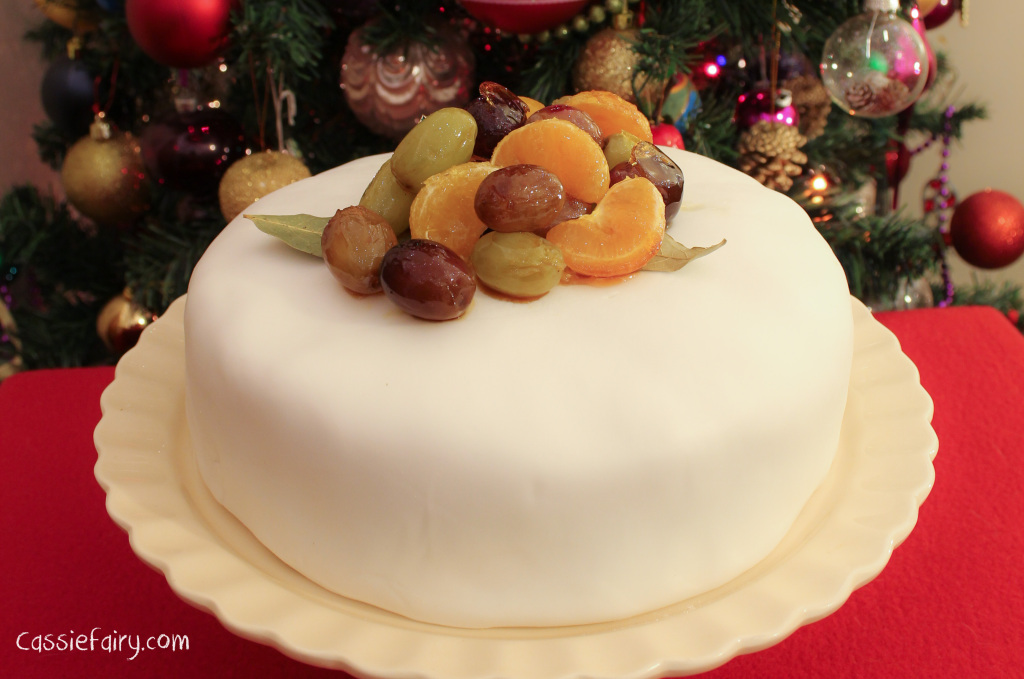
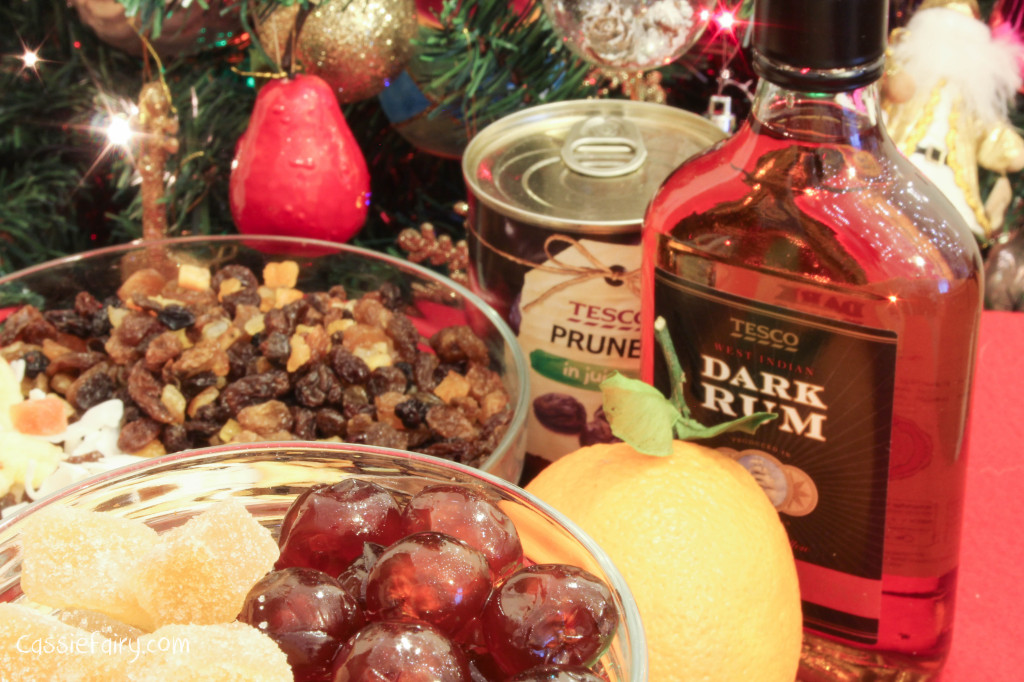 The recipe starts with a week-long soaking of the dried ingredients. This ensures that all the fruit is rehydrated and deliciously soft before it is added to the cake mix. The dried fruit selection for this cake includes tropical fruit mix (the type with coconut shavings and dried banana slices that you’d have on your breakfast cereal) so it’s essential to soak the ingredients to avoid a dry cake mix!
The recipe starts with a week-long soaking of the dried ingredients. This ensures that all the fruit is rehydrated and deliciously soft before it is added to the cake mix. The dried fruit selection for this cake includes tropical fruit mix (the type with coconut shavings and dried banana slices that you’d have on your breakfast cereal) so it’s essential to soak the ingredients to avoid a dry cake mix! 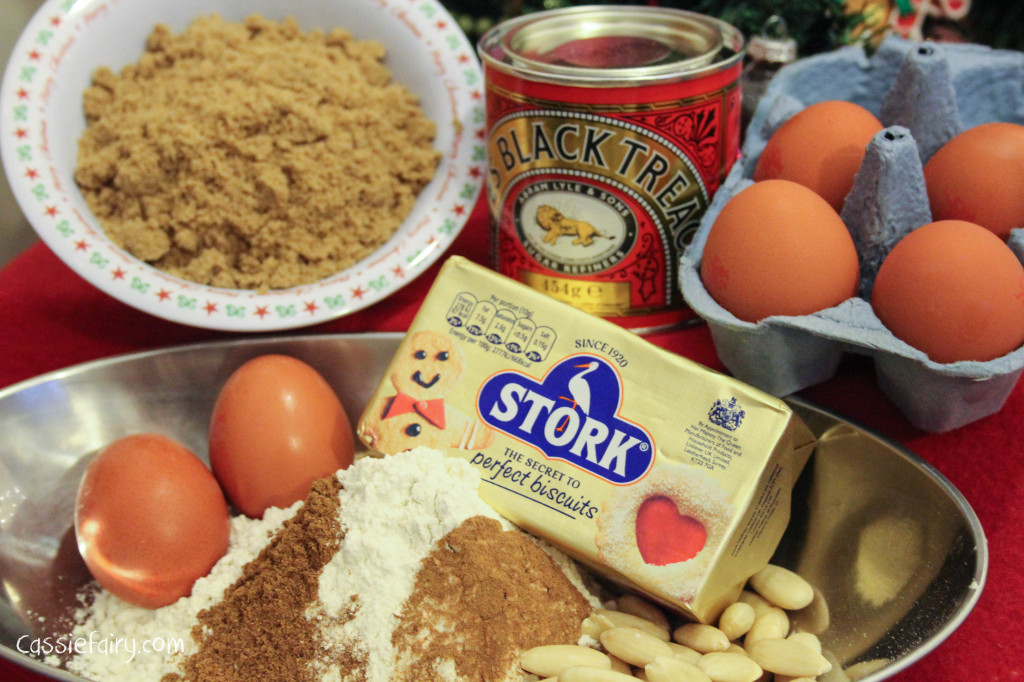 I didn’t leave it as long as suggested in the recipe (I just couldn’t wait!) but after a few days of shaking the ingredients in a tub full of rum, the fruit had adsorbed the alcohol and had become gooey and squishy – just right for the recipe. I’m sure that leaving the fruit to soak for even longer would improve the flavour, but if you’re in a rush to make a last-minute Christmas cake, it can easily be achieved with a shorter soaking – just keep an eye on the fruit, shake it often and wait until it absorbs most of the rum.
I didn’t leave it as long as suggested in the recipe (I just couldn’t wait!) but after a few days of shaking the ingredients in a tub full of rum, the fruit had adsorbed the alcohol and had become gooey and squishy – just right for the recipe. I’m sure that leaving the fruit to soak for even longer would improve the flavour, but if you’re in a rush to make a last-minute Christmas cake, it can easily be achieved with a shorter soaking – just keep an eye on the fruit, shake it often and wait until it absorbs most of the rum.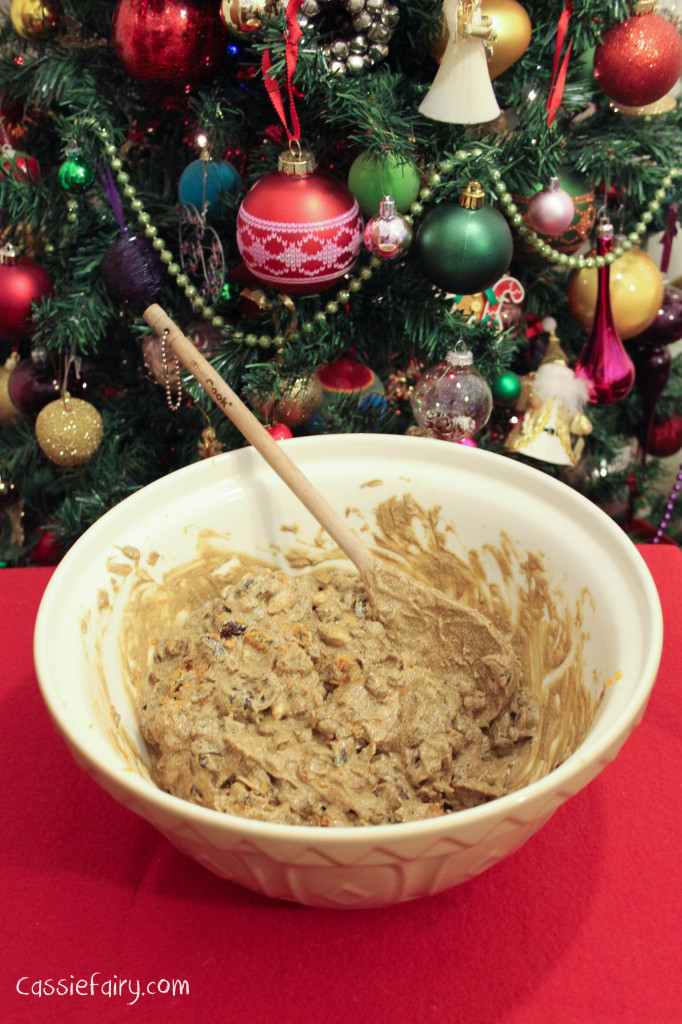 I was given a tip at a spirit-infusing event earlier this week that the fruit combines well with the alcohol if you tightly seal it into a large jar or tub and put it in the boot of the car for a few days. So even if you forget to turn the fruit or shake the mixture, it will do it’s own thing in the back of the car as you drive around. Just don’t blame me for any spillages and perhaps you could wrap the jar inside a plastic bag, just to be on the safe side!
I was given a tip at a spirit-infusing event earlier this week that the fruit combines well with the alcohol if you tightly seal it into a large jar or tub and put it in the boot of the car for a few days. So even if you forget to turn the fruit or shake the mixture, it will do it’s own thing in the back of the car as you drive around. Just don’t blame me for any spillages and perhaps you could wrap the jar inside a plastic bag, just to be on the safe side!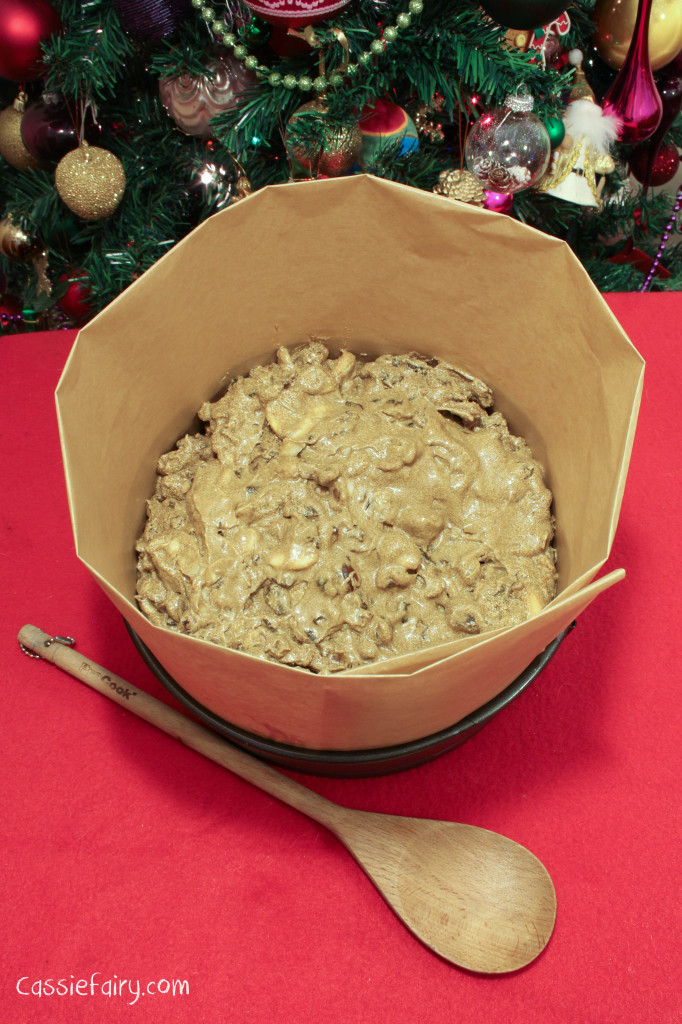 I enjoyed mixing up the cake batter because it was one of the most simple recipes that I’ve used. I creamed together muscovado sugar with Stork until it was light and fluffy before adding the treacle and eggs, and then folding in the flour, spices and fruit. It really couldn’t have been easier to combine the ingredients and in no time at all I was tipping the cake batter into my double-lined cake tin and popping it into the oven.
I enjoyed mixing up the cake batter because it was one of the most simple recipes that I’ve used. I creamed together muscovado sugar with Stork until it was light and fluffy before adding the treacle and eggs, and then folding in the flour, spices and fruit. It really couldn’t have been easier to combine the ingredients and in no time at all I was tipping the cake batter into my double-lined cake tin and popping it into the oven. 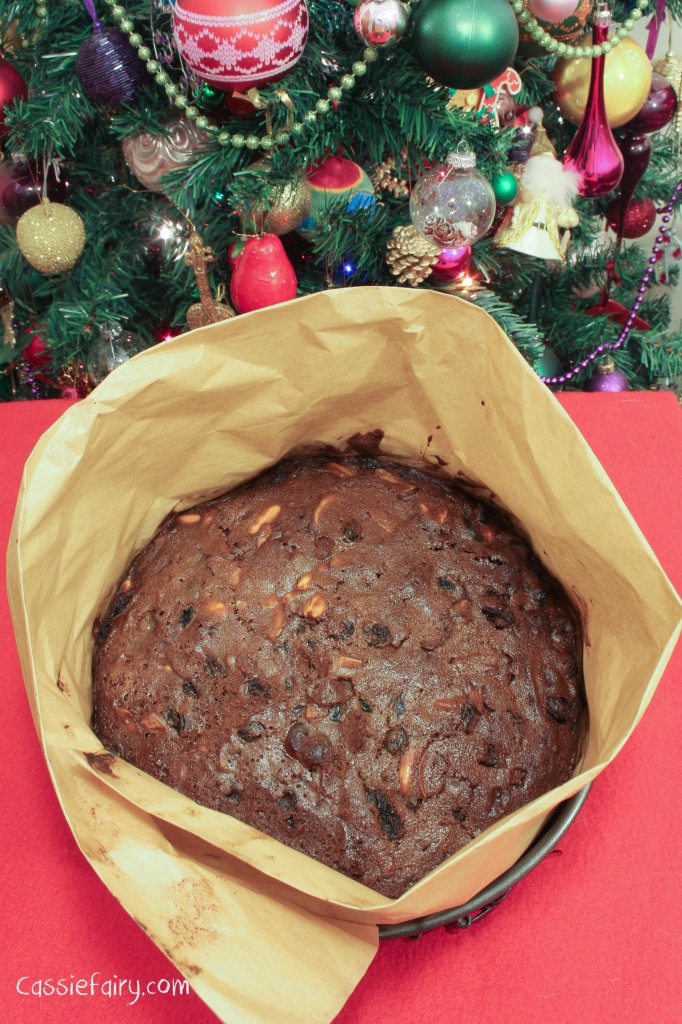 The only element of the recipe that takes any time is the cooking process at 150°C, and I checked on my cake after about 2 hours, and then every quarter of an hour after that until it was cooked. My tip to stop the top-layer of fruit from getting burnt (which has happened to me many times before!) is to put a disc of greaseproof paper on top of the cake while baking.
The only element of the recipe that takes any time is the cooking process at 150°C, and I checked on my cake after about 2 hours, and then every quarter of an hour after that until it was cooked. My tip to stop the top-layer of fruit from getting burnt (which has happened to me many times before!) is to put a disc of greaseproof paper on top of the cake while baking.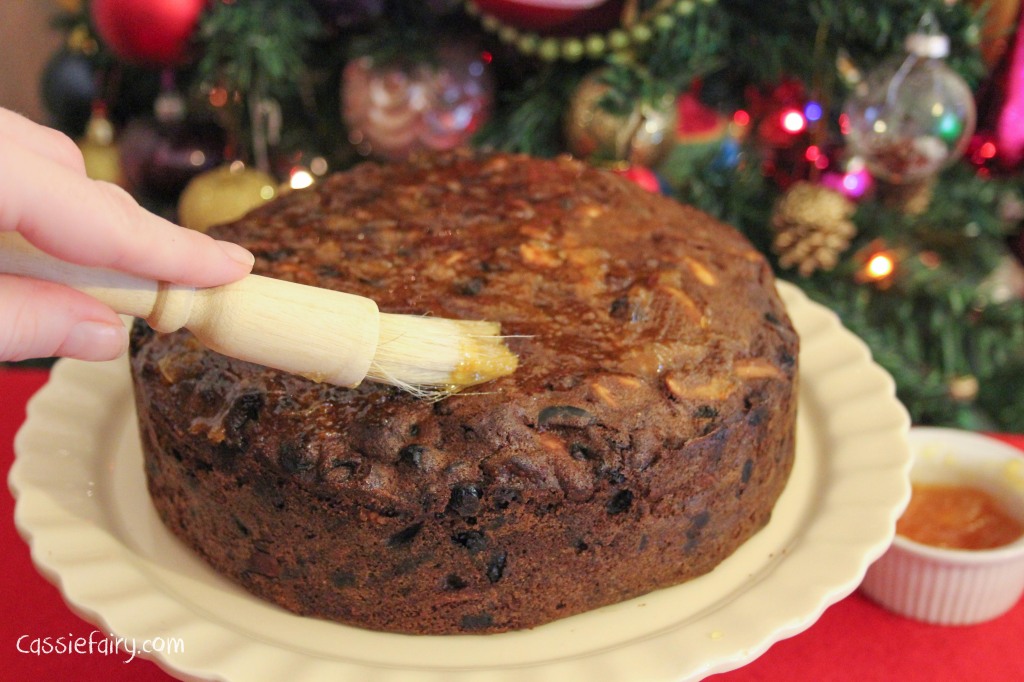
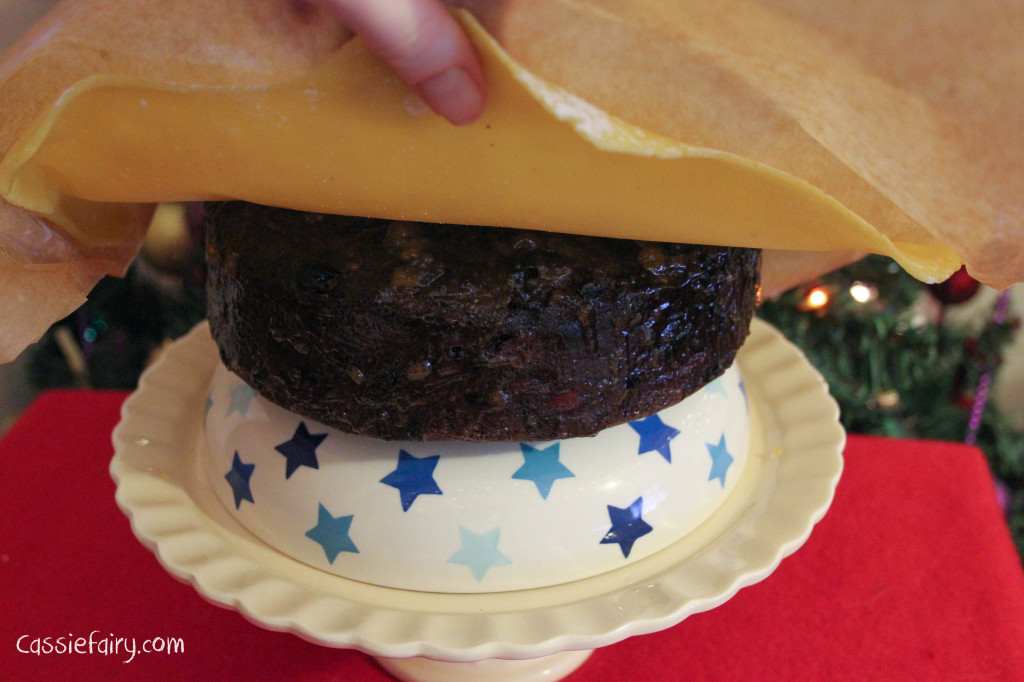 Decorating the cake was good fun, as my husband and I did it together. I put his muscles to work kneading the marzipan and icing until it was pliable while I brushed melted apricot jam onto the cake to make it sticky. I rolled out a disc of marzipan that was large enough to cover the cake and my top tip for this is to roll out the icing or marzipan on a sheet of greaseproof paper that has been dusted with icing sugar. This makes it easier to transfer to the cake, as you can pick up the entire sheet of greaseproof paper and turn it on top of the cake before peeling off the paper and smoothing down the marzipan/icing at the sizes.
Decorating the cake was good fun, as my husband and I did it together. I put his muscles to work kneading the marzipan and icing until it was pliable while I brushed melted apricot jam onto the cake to make it sticky. I rolled out a disc of marzipan that was large enough to cover the cake and my top tip for this is to roll out the icing or marzipan on a sheet of greaseproof paper that has been dusted with icing sugar. This makes it easier to transfer to the cake, as you can pick up the entire sheet of greaseproof paper and turn it on top of the cake before peeling off the paper and smoothing down the marzipan/icing at the sizes.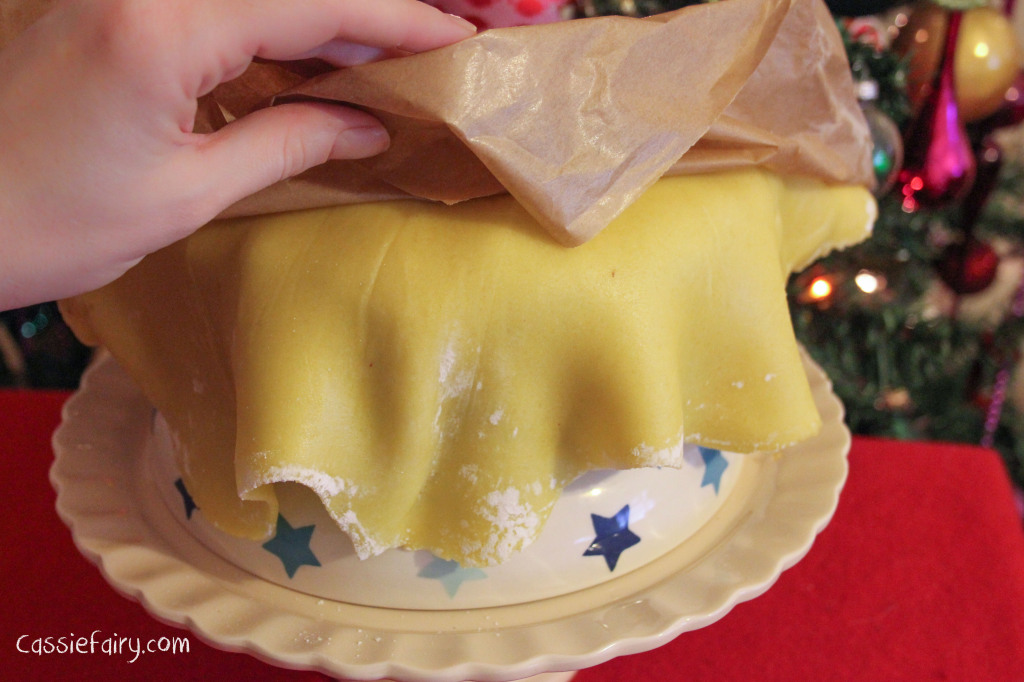
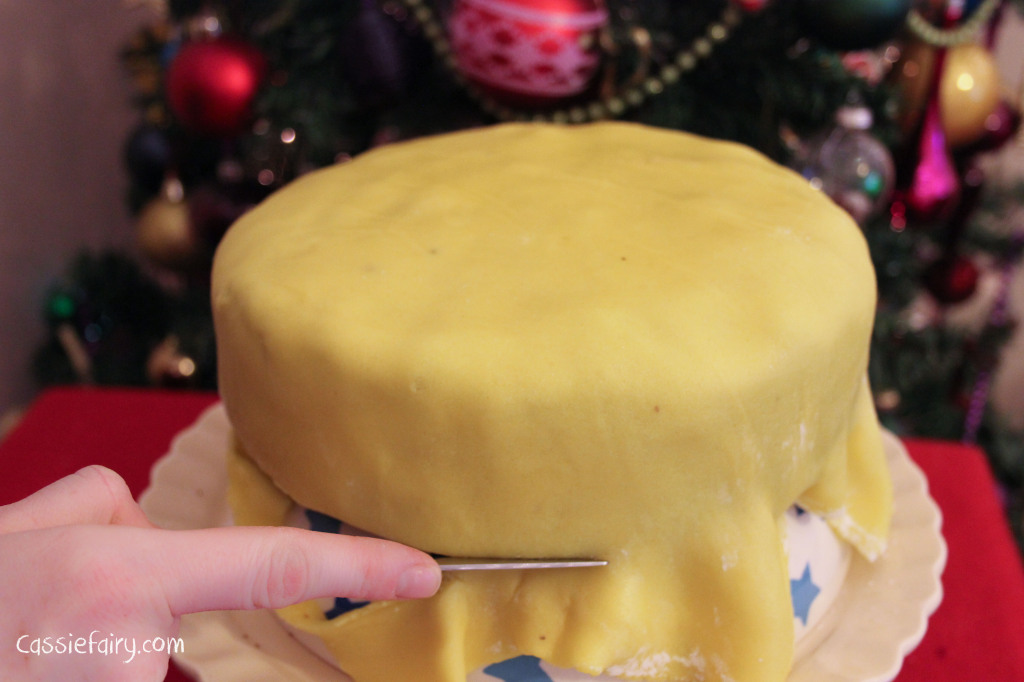 Another tip is to ice the cake while it is placed on an upturned bowl. This makes it easier to trim away the excess marzipan and icing at the bottom of the cake and you can easily pick it up to transfer it to a cake stand or tin afterwards.
Another tip is to ice the cake while it is placed on an upturned bowl. This makes it easier to trim away the excess marzipan and icing at the bottom of the cake and you can easily pick it up to transfer it to a cake stand or tin afterwards.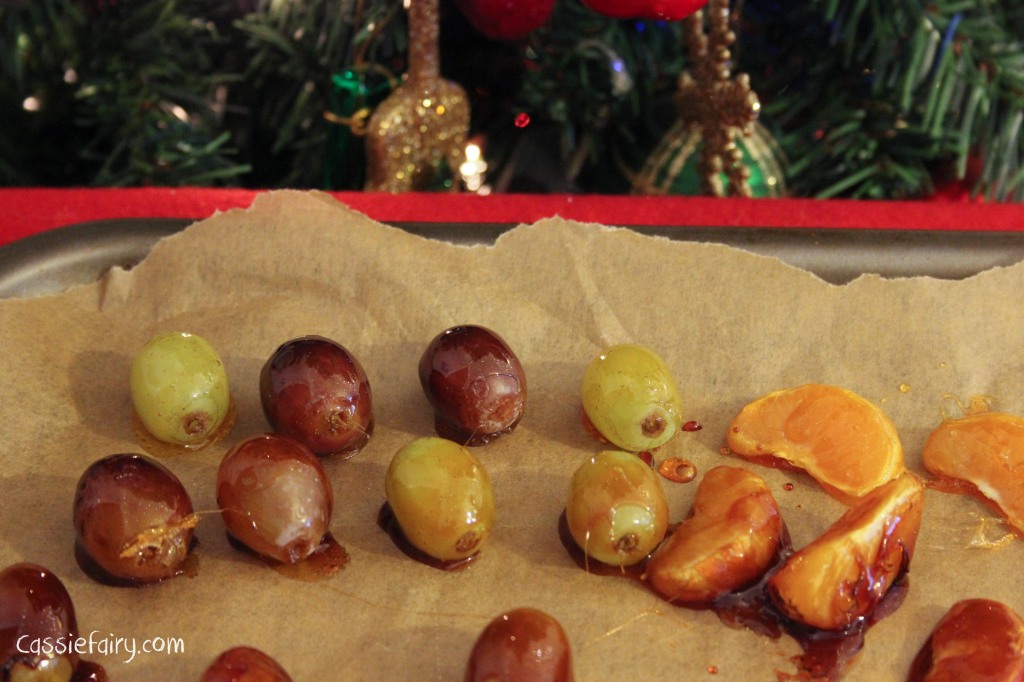
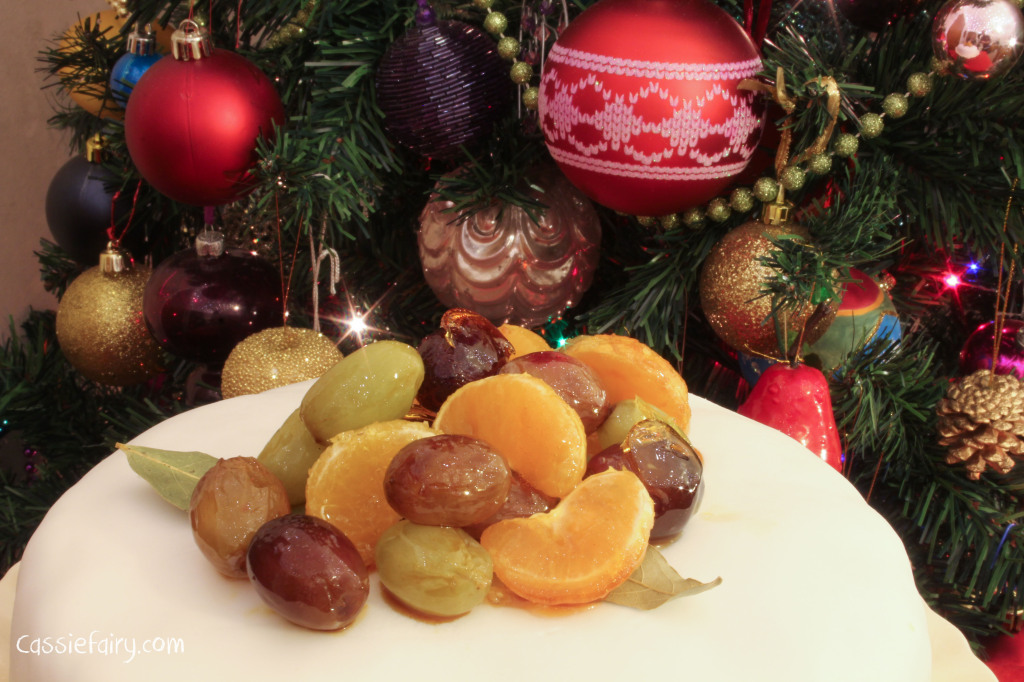 Making caramelised fruits to decorate the top of the cake was great fun because it’s a process that I’ve never tried before and I love learning something new! It sounds really difficult but actually it’s just a case of dissolving sugar in water and then boiling until it becomes a caramel colour. Obviously, boiling sugar and skin don’t mix (and I didn’t fancy getting burnt just before Christmas!) so I used skewers to spike the fruit and dip into the caramel before popping the coasted fruits onto baking paper to cool.
Making caramelised fruits to decorate the top of the cake was great fun because it’s a process that I’ve never tried before and I love learning something new! It sounds really difficult but actually it’s just a case of dissolving sugar in water and then boiling until it becomes a caramel colour. Obviously, boiling sugar and skin don’t mix (and I didn’t fancy getting burnt just before Christmas!) so I used skewers to spike the fruit and dip into the caramel before popping the coasted fruits onto baking paper to cool. 
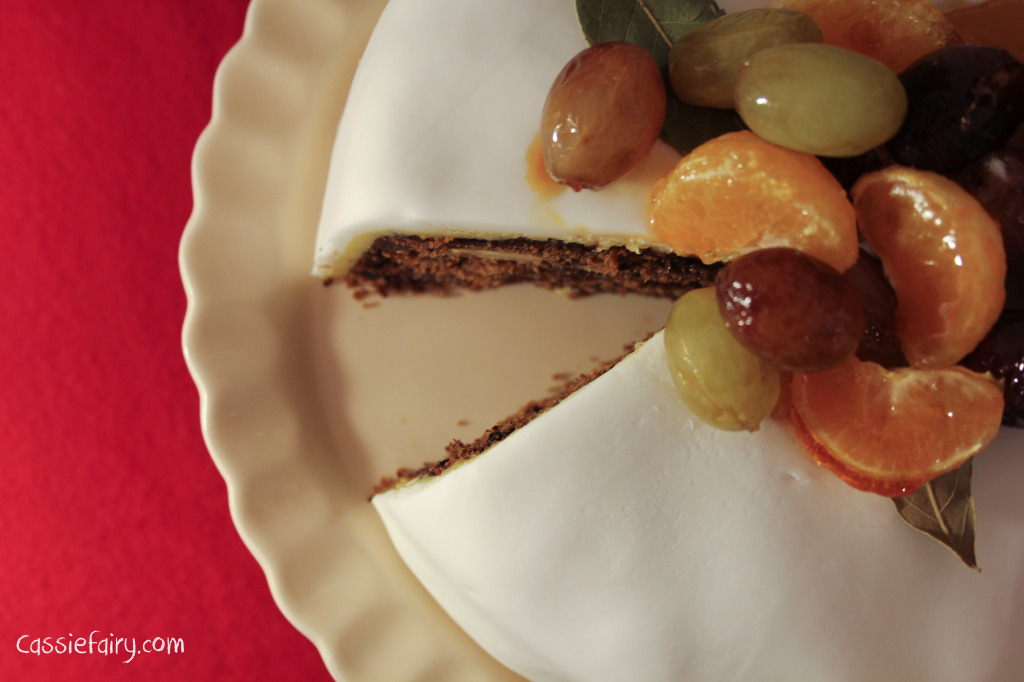 One thing that I didn’t realise at first was that the sugar would continue to get darker even after I’d taken it off the hob, and each dipped fruit would start to set almost as soon as I lifted it out of the caramel so I had to work quickly. Even so, some of the fruits ended up with a burnt-tasting sugar coating so I started again with a second batch of sugar and dipped all the grapes and satsuma segments really quickly to get a clear golden glaze.
One thing that I didn’t realise at first was that the sugar would continue to get darker even after I’d taken it off the hob, and each dipped fruit would start to set almost as soon as I lifted it out of the caramel so I had to work quickly. Even so, some of the fruits ended up with a burnt-tasting sugar coating so I started again with a second batch of sugar and dipped all the grapes and satsuma segments really quickly to get a clear golden glaze. 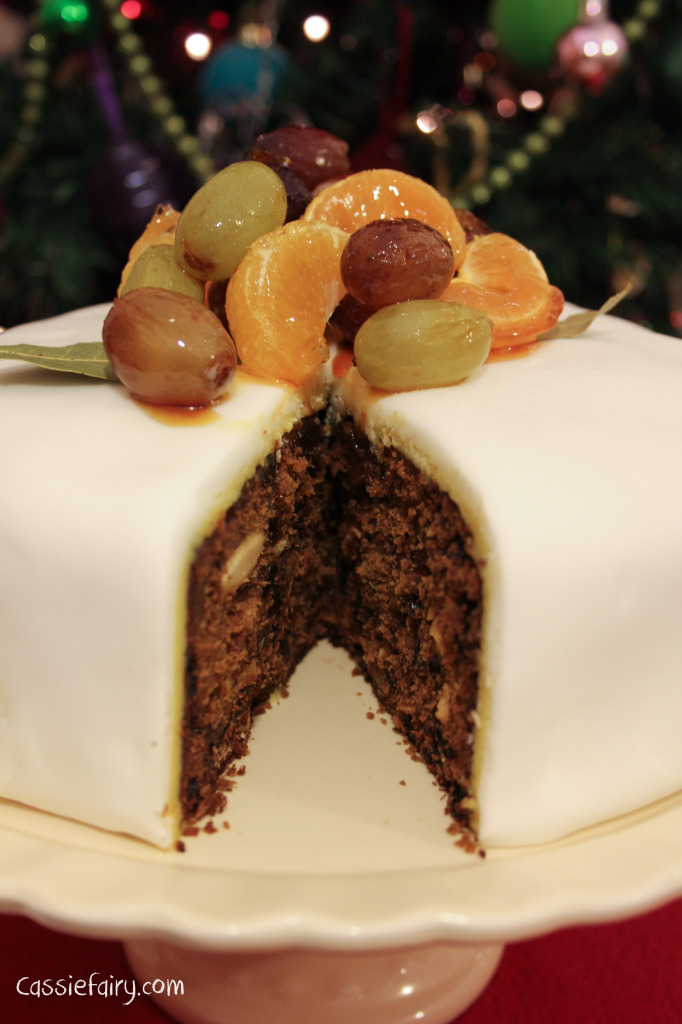 The cake itself tasted delicious; a slice packed full of fruit with a rich, boozy moistness that wasn’t too strong or sickly. Even with the more ‘unusual’ ingredients, it was still undeniably a Christmas cake and I can’t wait to share it with my family this weekend.
The cake itself tasted delicious; a slice packed full of fruit with a rich, boozy moistness that wasn’t too strong or sickly. Even with the more ‘unusual’ ingredients, it was still undeniably a Christmas cake and I can’t wait to share it with my family this weekend. 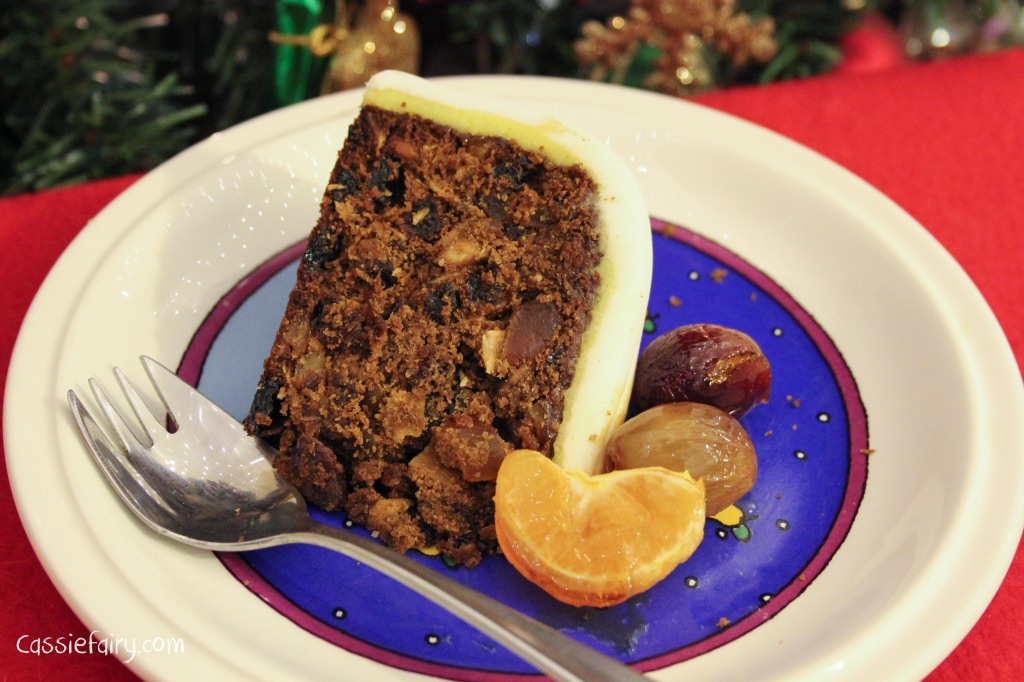 Let me know if you try out the recipe for yourself – it’s available on the Bake With Stork website and I’d love to see photos of your festive bakes so please tweet your pics to me @Cassiefairy.
Let me know if you try out the recipe for yourself – it’s available on the Bake With Stork website and I’d love to see photos of your festive bakes so please tweet your pics to me @Cassiefairy.
Some items in this blog post have been gifted to me and the pink links indicate a gifted product, affiliate link or information source. All thoughts and opinions in this post are based on my own experience and I am not responsible for your experience 🙂























One Response
This cake looks and sound delicious. Perhaps I will give it a try next year!